By Dan Weisz
Today’s post focuses on just two subjects:
On a recent outing, I came across this Curve-billed Thrasher gorging on some ripe prickly pear cactus fruit. The Thrasher paused to check me out but continued consuming the fruit. In this photo, you can see a tiny tidbit of red fruit on the top of the bird’s beak and some red at the base of the bird’s beak. I like how the Thrasher is straddling two ripe fruit.
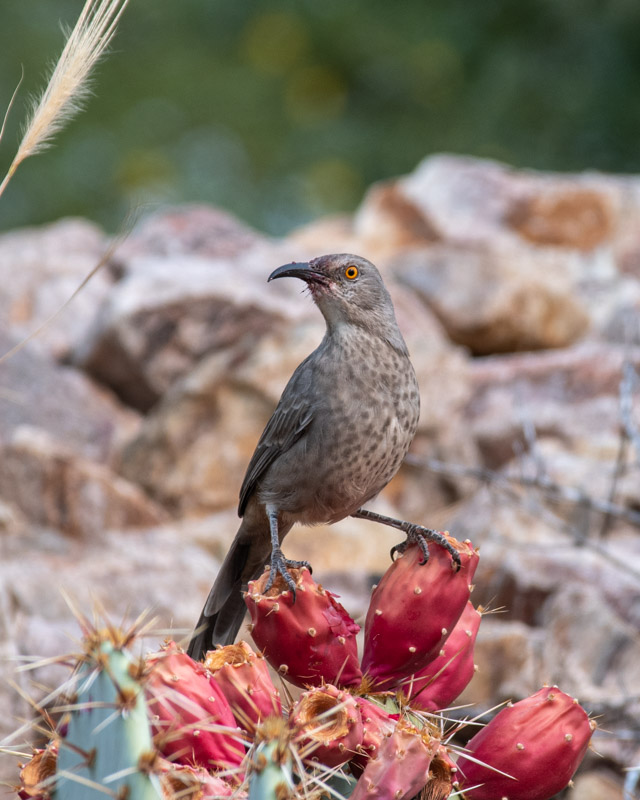
And it takes another bite. Prickly pear fruit is also known as “tuna’, Indian fig, Christian fig and tuna de Castilla. The fruit contains about 85% water, 15% sugar and a tiny bit of protein. The flesh is a good source of minerals and some amino acids.
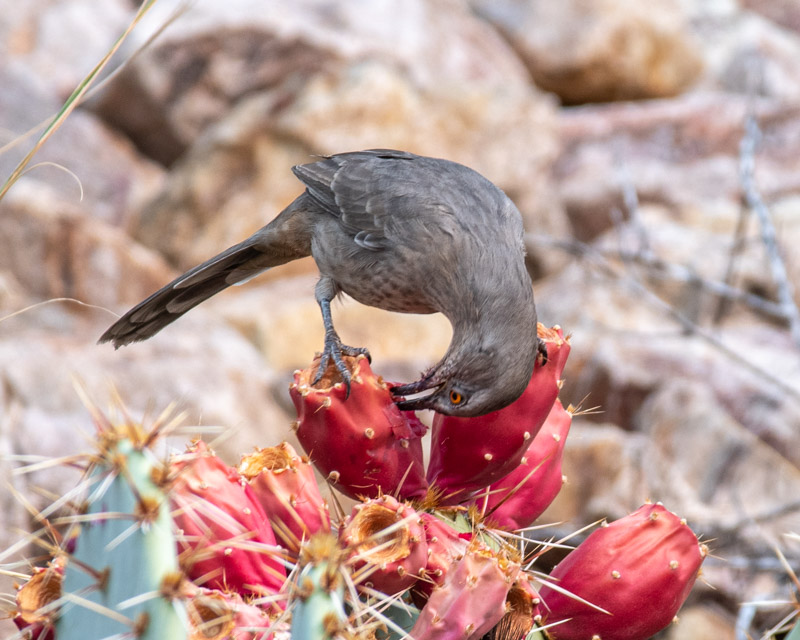
The Curve-billed Thrasher took little bites of the fruit each time and then swallowed each bite whole. I’m pretty sure the bird knows that prickly pear fruit is a rich source of food and nourishment but does not know it’s exact nutritional data: https://nutritiondata.self.com/facts/fruits-and-fruit-juices/2039/2
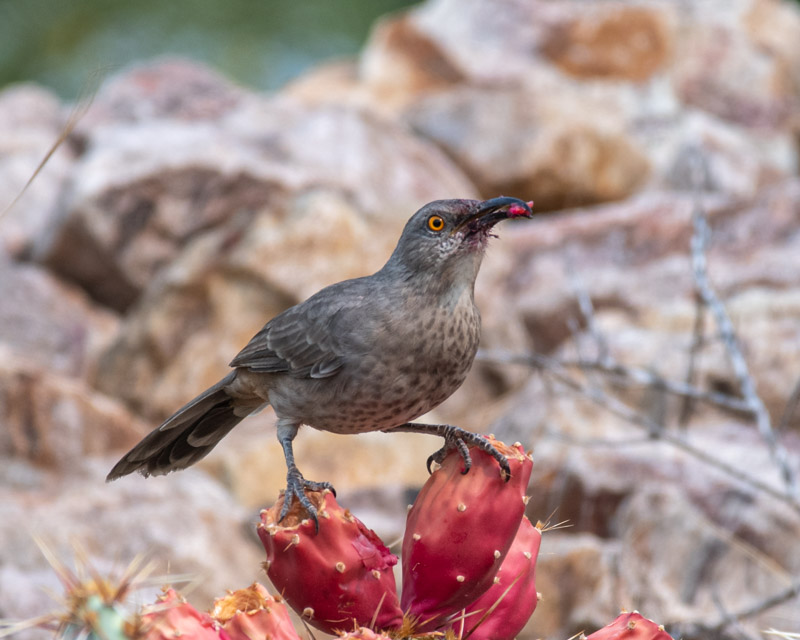
Gulp!! And then the fruit goes down the hatch. On each fruit you can see little brown spots. Each spot is a cluster of “glochids”, or fine, barbed, hair-like spines. They are difficult to see and are practically impossible to remove if they get in your skin. Be careful!!!
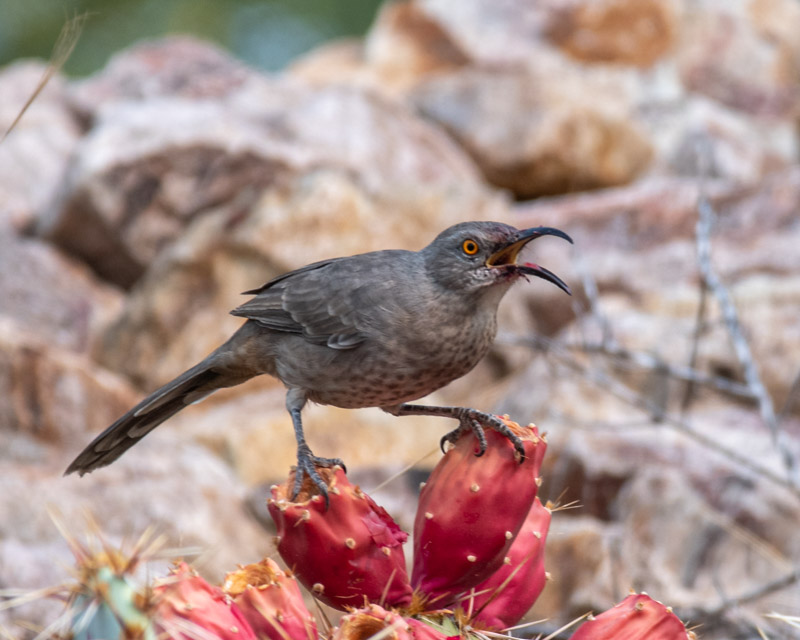
If you are interested in collecting and eating prickly pear fruit, here is one “how-to” source: https://blog.desertmuseum.org/2019/09/03/lets-get-to-the-fruit-of-the-matter-prickly-pear-harvesting-101/
Earlier this spring I wrote about my new Passion Vine plant and the Gulf Fritillary butterflies that it attracted. Passion Vine is a host plant for that species of butterflies which means that Gulf Fritillary butterflies lay their eggs on the plant. When the eggs hatch the larva (caterpillar) consumes the plant while it grows and grows. Earlier this summer the hordes of caterpillars decimated my plant and I was happy to see the life cycle of this butterfly. The plant became leafless but over the past few months it has again leafed out. Only a few butterflies returned late this summer and I was able to catch one at the end of its life cycle. Below is a Gulf Fritillary moments after it emerged from its chrysalis.
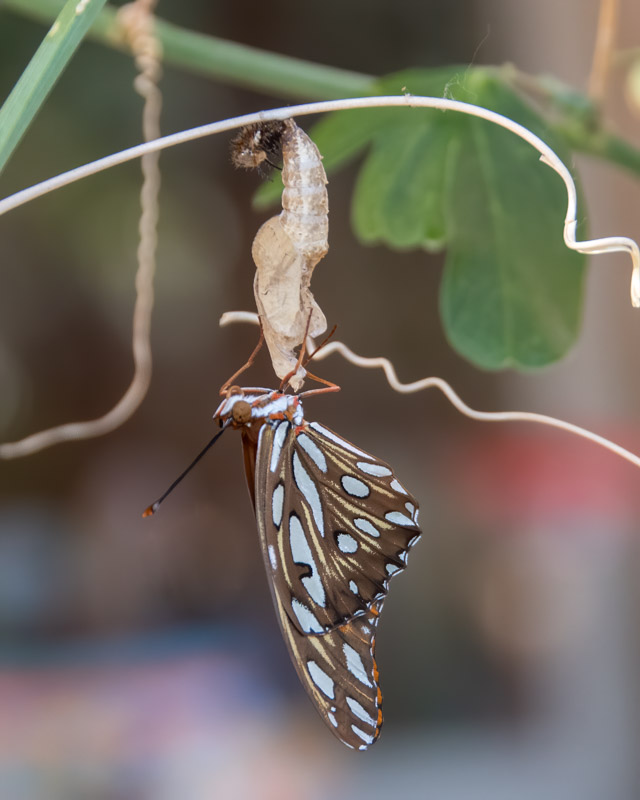
The new butterfly turned around but still held on to the now-empty shell of the chrysalis. Its wings had dried but its antennae were still stuck together. It was just about ready to finally fly off. (And FYI, while the words cocoon and chrysalis are often used interchangeably, cocoons are specific to moths while chrysalises are formed by butterflies.)
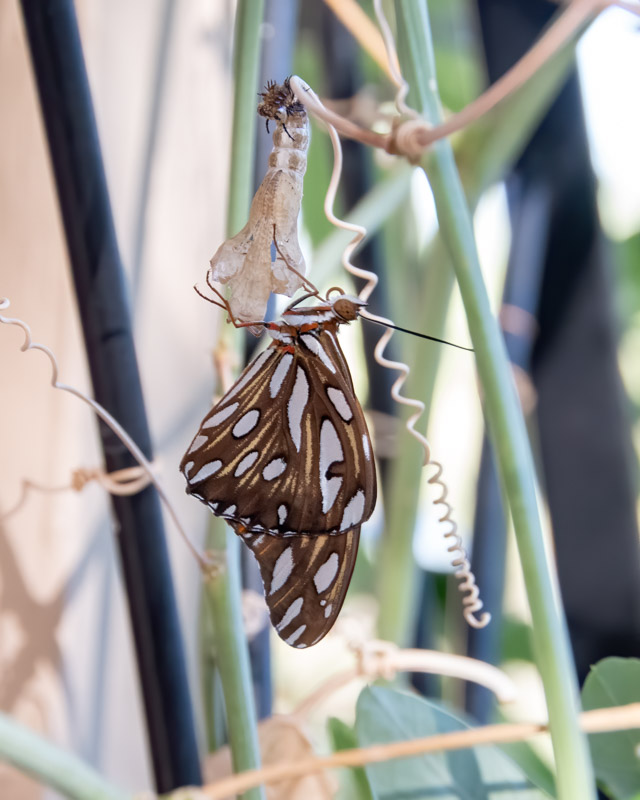
And then it flew. The orange upper-wing color of Gulf Fritillary Butterflies is striking. In warm weather a Gulf Fritillary may live 4-6 weeks so this one needs to get busy quickly.
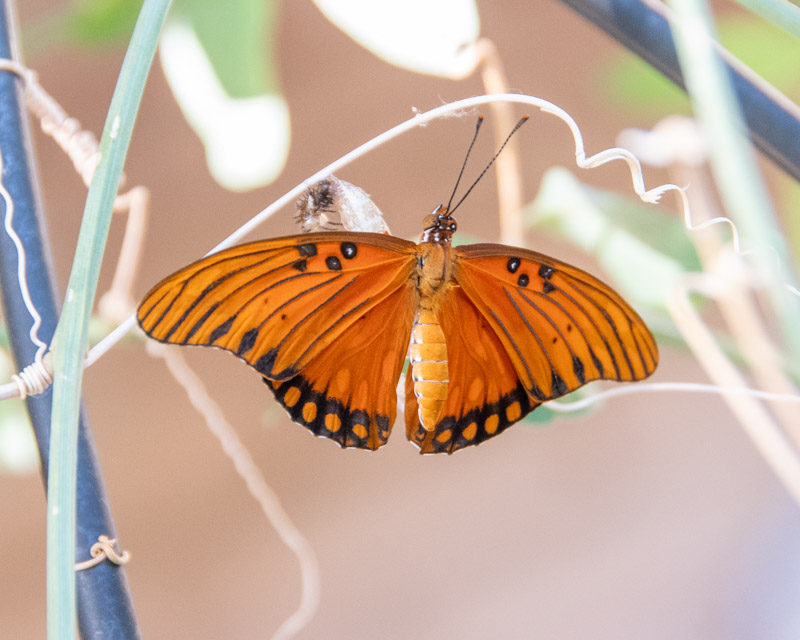
As it flew off I wished this butterfly a good life. At some point, I know that many more of them will return to my passion vine plant to continue the cycle of life.
